Captain James Victor Atkinson: 9th Battalion/49th Battalion
By JOL Admin | 4 August 2015
Guest blogger: Ian Lang, researcher, Coorparoo Methodist Church Roll of Honour
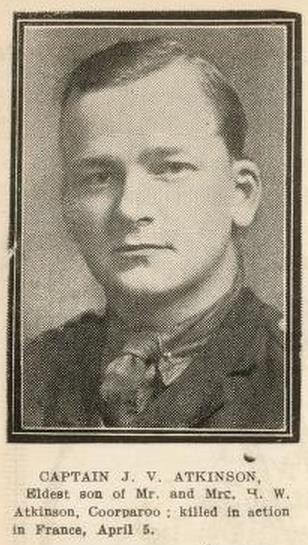
Captain J.V. Atkinson, Page 26 of the Queenslander Pictorial, supplement to The Queenslander, 13 October, 1917.
James Atkinson was the son of Henry Wallace Atkinson, a prominent city architect, and Martha Atkinson. The family address was “Martha Villi”, Cavendish Road, Coorparoo. James was born in 1893 and as a boy attended Coorparoo State School and then Brisbane Boys Grammar.
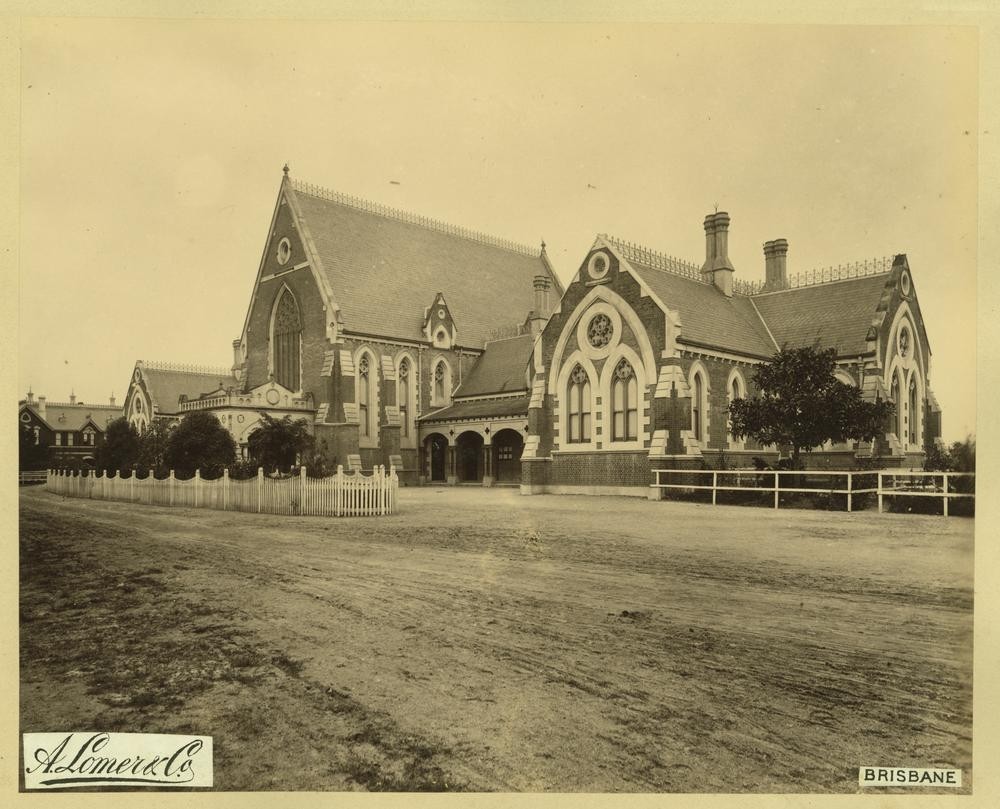
Brisbane Boys Grammar School 1889
James enlisted on 22 August 1914 aged 19 years and 9 months, barely two weeks after war was declared and just two days after recruiting began. At the time he stated that he was serving in the 9th Logan and Albert Regiment, Citizen Forces. His attestation papers record that he was employed as an insurance clerk with New Zealand Insurance.
Even by the high standards of recruitment in 1914, James Atkinson must have presented as an outstanding candidate. A secondary education was a rarity in the early 1900’s indicating a person of outstanding ability. It is therefore no surprise that within five days of enlistment, James was promoted to lance corporal whilst in training at Enoggera, and then to corporal after a further five days. One day later he was promoted to sergeant.
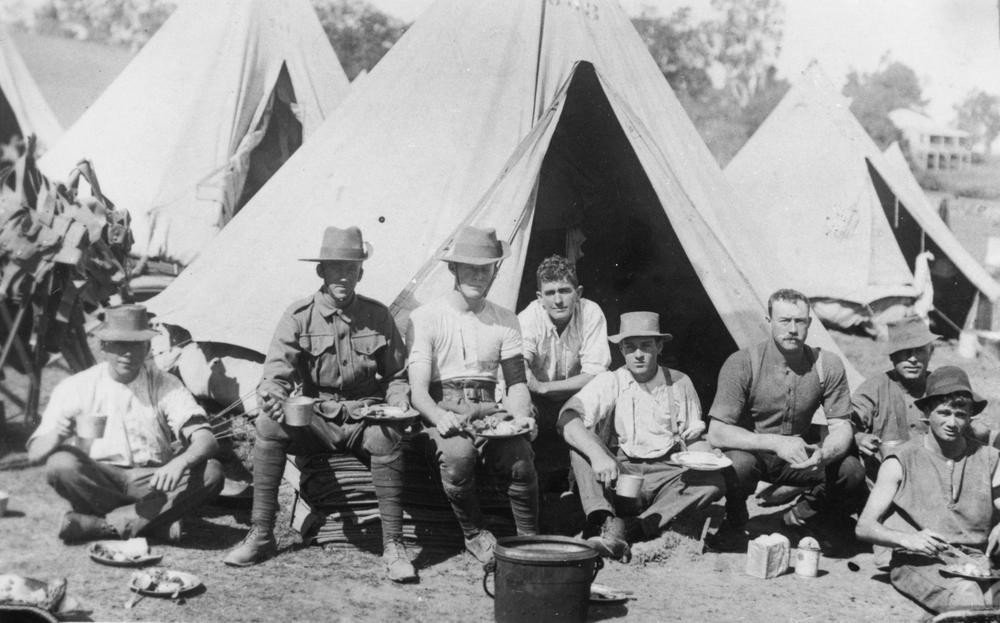
Sharing a meal at Frasers Paddock Enoggera Army Camp Brisbane ca. 1914
One month after James’ enlistment, the 9th Battalion, after parading through the streets of Brisbane, boarded HMAT “Omrah”. Fears of German naval activity in the Pacific caused a short delay in the gathering of the first transports. Meanwhile the battalion disembarked from their transport in Melbourne and spent from the 1st to the 16th of October in training, probably with the other battalions of the 3rd Brigade. On the 17th October, the battalion was inspected on the Melbourne Town Pier by Prime Minister Andrew Fisher (who famously pledged to “defend the empire to the last man and last shilling” during the election campaign of 1914) and the Minister of Defence, Senator George Pearce. The Battalion then re-embarked on the “Omrah” and sailed for King George Sound, Albany to rendezvous with the rest of the first division transports before sailing for Egypt via Colombo, Aden, Suez and Port Said. During the voyage, James reverted to the rank of Corporal at his own request.
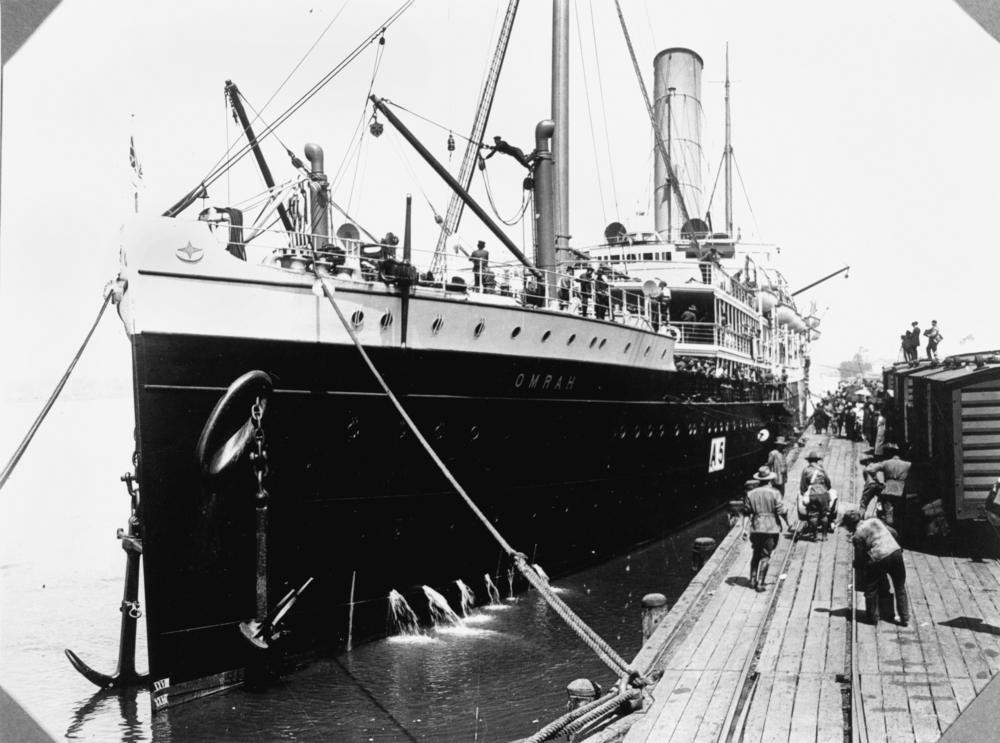
The time of the first division’s sojourn in Egypt has been well documented elsewhere and I do not propose to dwell on this part of the narrative. By March 1915, training had been completed and the 9th sailed for Lemnos where they were in camp whilst practising boat drills for the landings at Anzac.
The plan for the landing of 25 April called for the 3rd Brigade to land first as the covering force with the 9th Battalion on the far right. 182 Corporal James Atkinson was promoted to the rank of Sergeant on Gallipoli on 3rd July 1915.
On 2nd August, Sergeant Atkinson was evacuated from the peninsula to the Hospital Ship “Gascon” with what the records describe as diarrhoea, but given that he would spend the next six months in the No.2 General Hospital in Egypt, was more likely dysentery. On the 18th February 1916, James was discharged from hospital and was attached to the 3rd Training Battalion at Mena Camp in Egypt.
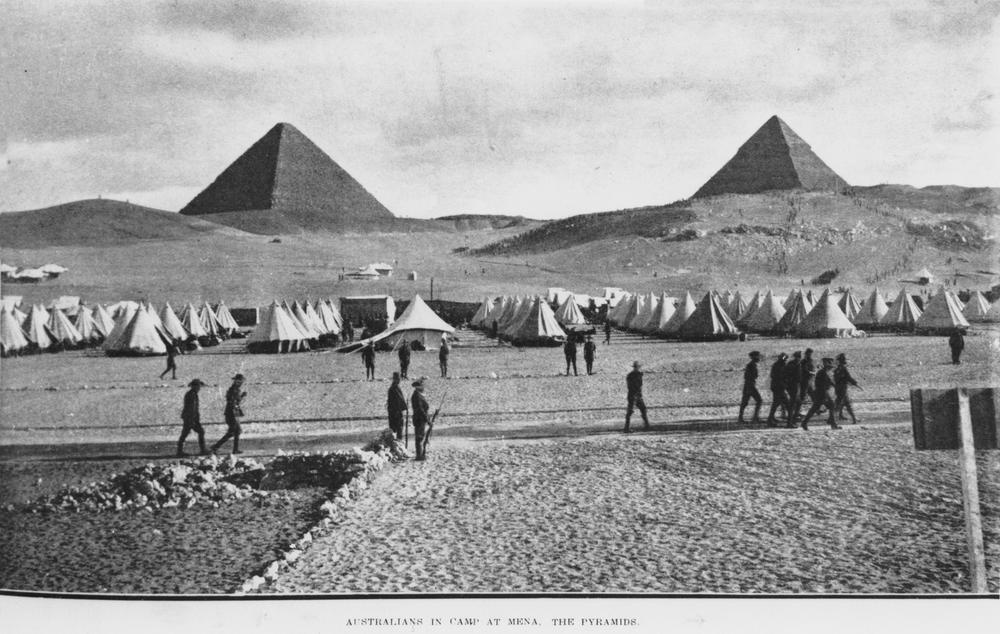
Australians in camp at Mena. The Pyramids
After the evacuations of the ANZAC Force from Gallipoli, the Australian Government planned to expand the AIF from its two divisions to five. To achieve this huge expansion, a number of original ANZAC battalions were split to form the nucleus of two battalions with the ranks being swelled by reinforcements who were now in Egypt. The 9th Battalion would be halved to create two battalions, the 9th and the 49th. In keeping with the parochial nature of the AIF, both the 9th and the 49th would be nominally Queensland Battalions (and would share a similar battalion patch of black over blue, with the 9th’s being a rectangle and the 49th’s being a circle). James Atkinson transferred from the training battalion to the 49th on the 16th March 1916. On 8th April while still in Egypt, James was promoted to Regimental Sergeant Major, and then almost immediately was promoted to 2nd Lieutenant. When the 9th arrived in Marseilles on the 12th June, James went off to Officer’s Training.
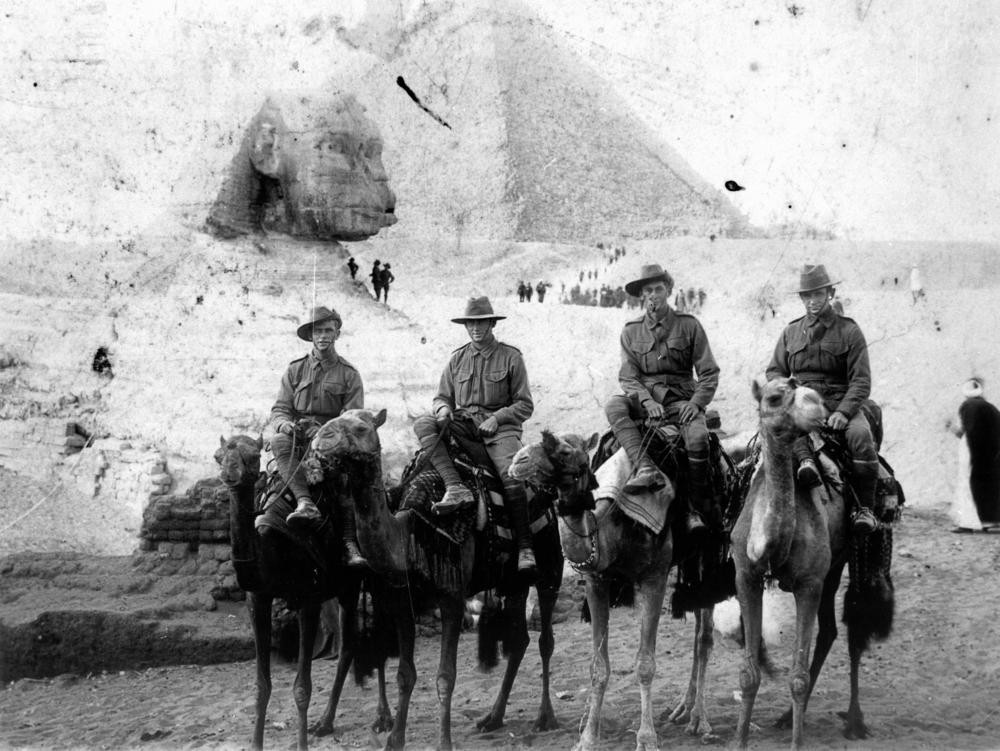
Privates from the 9th Battalion enjoying a camel ride near the Pyramids, Egypt
On 1 July 1916 (the opening day of the battle of the Somme) 2nd Lt. James Atkinson returned to his unit and was immediately promoted to 1st Lieutenant. At this time, the 49th Battalion, along with the rest of the 13th Brigade, were stationed in the “nursery trenches” in the Armentieres sector of the front. As the situation on the Somme called for increasing manpower, Haig brought three Australian Divisions (1st, 2nd and 4th) to the staging areas around Albert to use in the assault on Pozieres.
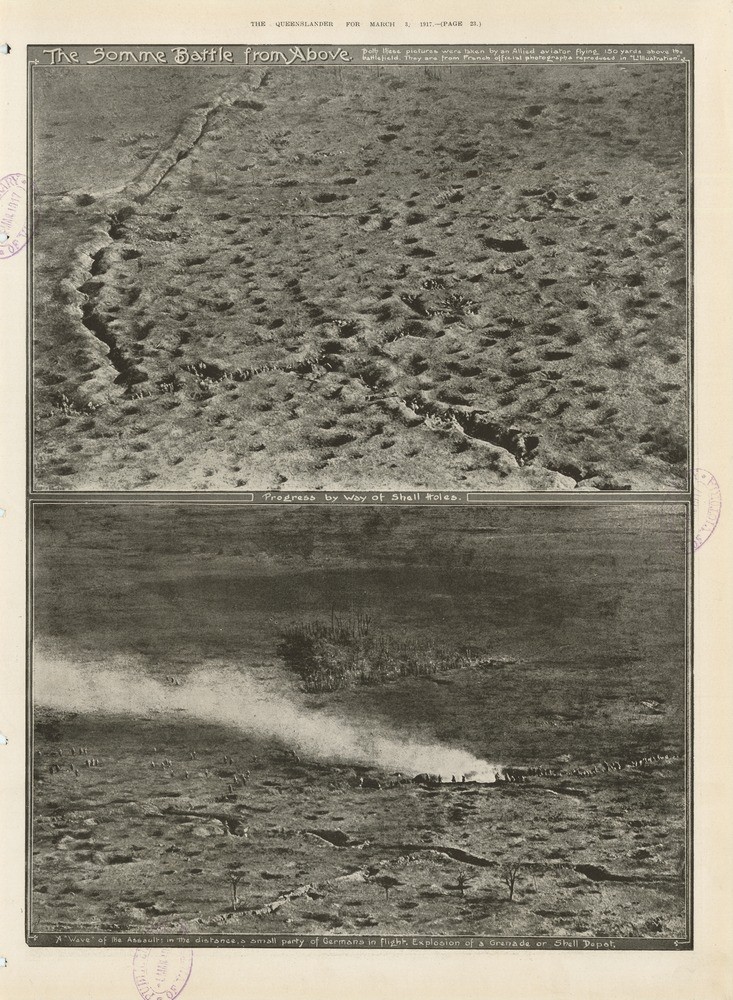
The Somme battle from above. Page 23 of the Queenslander Pictorial supplement to The Queenslander 3 March 1917
The 1st and 2nd Divisions were thrust into the struggle for Pozieres first during late July and early August, and had secured the village and the important blockhouse on the site of a windmill above the village. It was now the turn of the 4th Division (of which the 49th was a part) to continue the offensive towards a ruined farm which the Germans had heavily fortified by extending the cellars and creating a line of three defensive trenches. The farm was depicted on the maps as “La Ferme du Mouquet” but the Australians referred to it as “Moo Cow Farm” or “Mucky Farm.”
The assault on the farm was conducted on an ever narrowing front that was enfiladed by German artillery and machine guns on three sides. The ground was so churned up that advancing troops could not recognise a trench line when they reached it. Attempts to dig new trenches were unsuccessful due to the loose ground caving in. The 49th was finally withdrawn from the battle for Mouquet Farm without the objective being reached at considerable cost. The 4th Division had sustained 4650 casualties and the officer corps of the 49th was particularly hard hit, sustaining 5 officers killed, 6 wounded and 2 missing. Lt. James Atkinson was lucky to have survived unscathed.
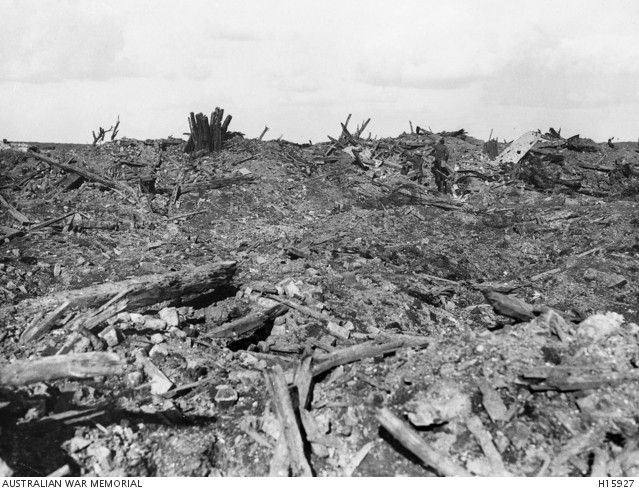
Mouquet Farm, France. October 1916, Australian War Memorial, H15927
The 49th were withdrawn from the Somme in September 1916 and sent to rest with the remainder of the Australian Divisions around Ypres in Flanders. In November of 1916, James Atkinson was detached to the School of Instruction for officers at Etaples and returned to the unit in February 1917. In May, James was granted one week’s leave in England and he returned to his unit in time for the 13th Brigade’s assault on Messines on 7 June which opened the third battle of Ypres, often referred to as the battle of Passchendaele.
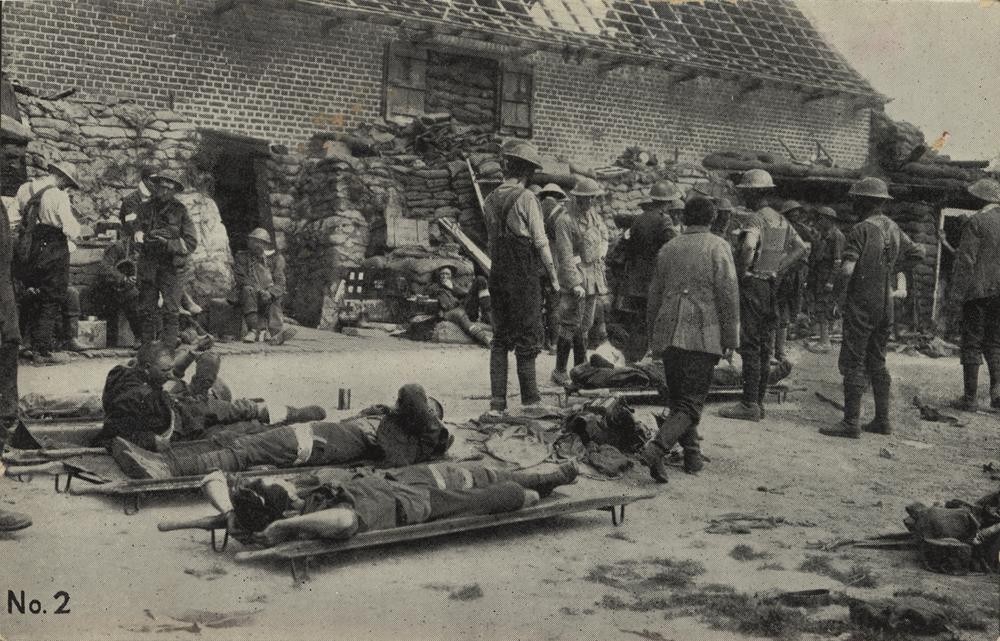
Battle of Messines. Anzac Field Dressing Station scene 7 June 1917
On 1st August of that year, James was promoted to Captain and transferred to the 13th Training Battalion in Codford, England where he was seconded until March of 1918 when he rejoined his unit.
On 21 March 1918, Ludendorff launched his final gamble to break the stalemate on the Western Front. The timing was critical as the Germans had a number of divisions available after the collapse of the Eastern Front which were hastily transferred to the Western Front. The operation needed to succeed before General Pershing’s U.S. Forces, which were arriving on the Western Front, could be deployed and swing the course of the war in the allies favour. Operation Michael caught the British Forces in the Somme by surprise with the speed and efficiency of the advance and the gains of 1916/ 17 along the Peronne-Amiens axis were quickly surrendered by Gough’s forces.
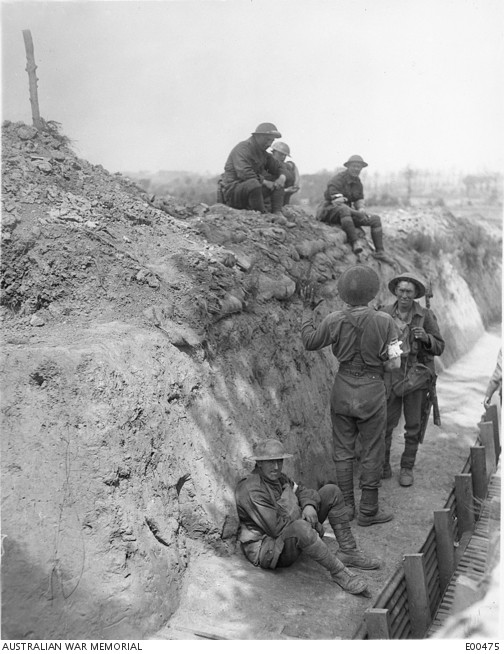
Wounded members of the 49th Battalion returning along Plum Duff trench from the early fighting in the Battle of Messines, Australian War Memorial E00475
To halt the advance, first the 3rd and then the 4th Australian Divisions were rushed into the line at Dernacourt on the Ancre River just south west of Albert. On the 5th April, the 13th Brigade faced one of the heaviest infantry attacks of the war. The 49th was defending a railway embankment but the Germans managed to cut them off from the flank support by pouring through a railway underpass. The 12th and 13th Brigades were attempting to halt 2 and a half German Divisions. At 5:00pm the 49th along with the 45th Battalions counterattacked to regain the embankment. The 4th Division suffered 1100 casualties at Dernacourt; Captain James Atkinson was one of them. Also killed on that day was James’ brother in law, Lieutenant Reginald Verry of the 49th Battalion.
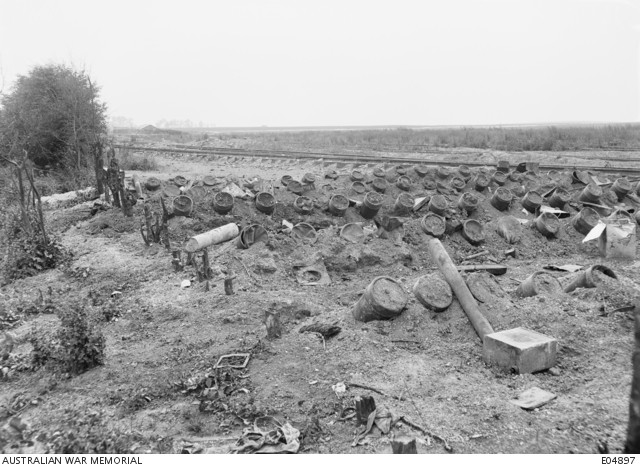
Dernancourt, France. 14 June 1918. A set OF 180 gas projectors alongside the Albert-Amiens railway, Australian War Memorial E04897
It would appear that James was killed outright as there is no record of him being in a Field Ambulance or Casualty Clearing Station. He was buried close to another 49th Battalion man, Private Edward Rieman in the Albert Road Cemetery (perhaps in the same grave). A photograph of James’ grave was sent to his father. At war’s end, the Imperial War Graves Commission began consolidating the thousands of scattered graves into central locations. When the grave of Capt Atkinson and Private Rieman was excavated, no remains were found. Instead a memorial cross was erected with the following inscription.
To the memory of this Dominion Officer and man killed in action in April 1918 and buried at the time in Albert Road Cemetery, which was partially destroyed by the enemy in August 1918.
Their glory shall not be blotted out.
Eventually in 1923, The IWGC erected individual headstones for each man in the Dernacourt Communal Cemetery Extension, even though there were no physical remains. This was a departure from normal practice, as men whose graves had been lost were usually commemorated on a memorial, which in the case of Australian soldiers in France would have been the National Memorial at Villers Bretonneux ( even though it was not finished until 1938). There is considerable correspondence regarding the burial of Capt Atkinson in his file in the National Archives.
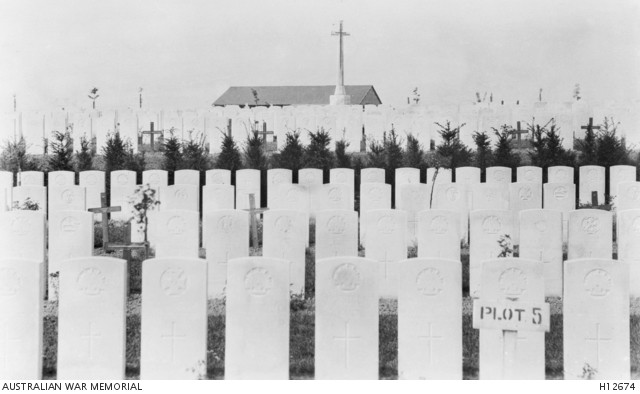
Dernancourt, France. A section of the Communal Cemetery Extension, Australian War Memorial H12674
James Atkinson’s personal effects (which in the case of officers included all uniform items) were packed in a sealed steamer trunk and valise to be despatched to his father. Among the usual personal items such as cards, letters and souvenirs there was also an automatic pistol (not service issue) in a leather holster. The baggage was loaded onto the S.S. Barunga in July 1918. Also on board the Barunga was a number of returning wounded and discharged servicemen heading for Australia. On 15 July 1918 the Barunga was torpedoed by a German submarine south of the Scilly Isles. She sank quickly with all cargo being lost but all survivors were rescued. Ironically, the Barunga was previously registered as the Sumatra, and had been confiscated from the German owners by the Australian Government when she was discharging cargo in Sydney in August 1914. Strangely James’ father had not been notified that his son’s effects had been lost at sea as he wrote to Base Records in February 1919 enquiring about them.
James Atkinson began his military career as a private and finished as a captain. This was not unheard of in the AIF but it indicates the high rate of attrition within the infantry battalions. James had survived unscathed (except for a time in hospital in Egypt) through almost four years of war. He saw action in Gallipoli, France and Belgium; through some of the fiercest battles of the war. His father received three medals, the 14/15 Star, Empire Medal and Victory Medal from a grateful nation.
Comments
Your email address will not be published.
We welcome relevant, respectful comments.